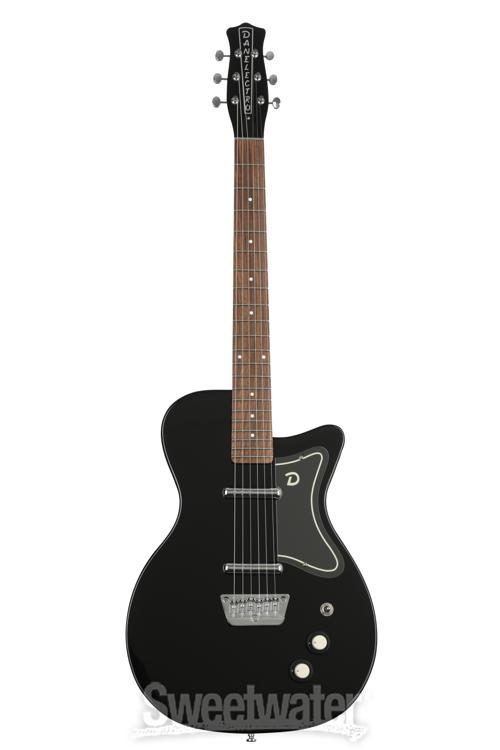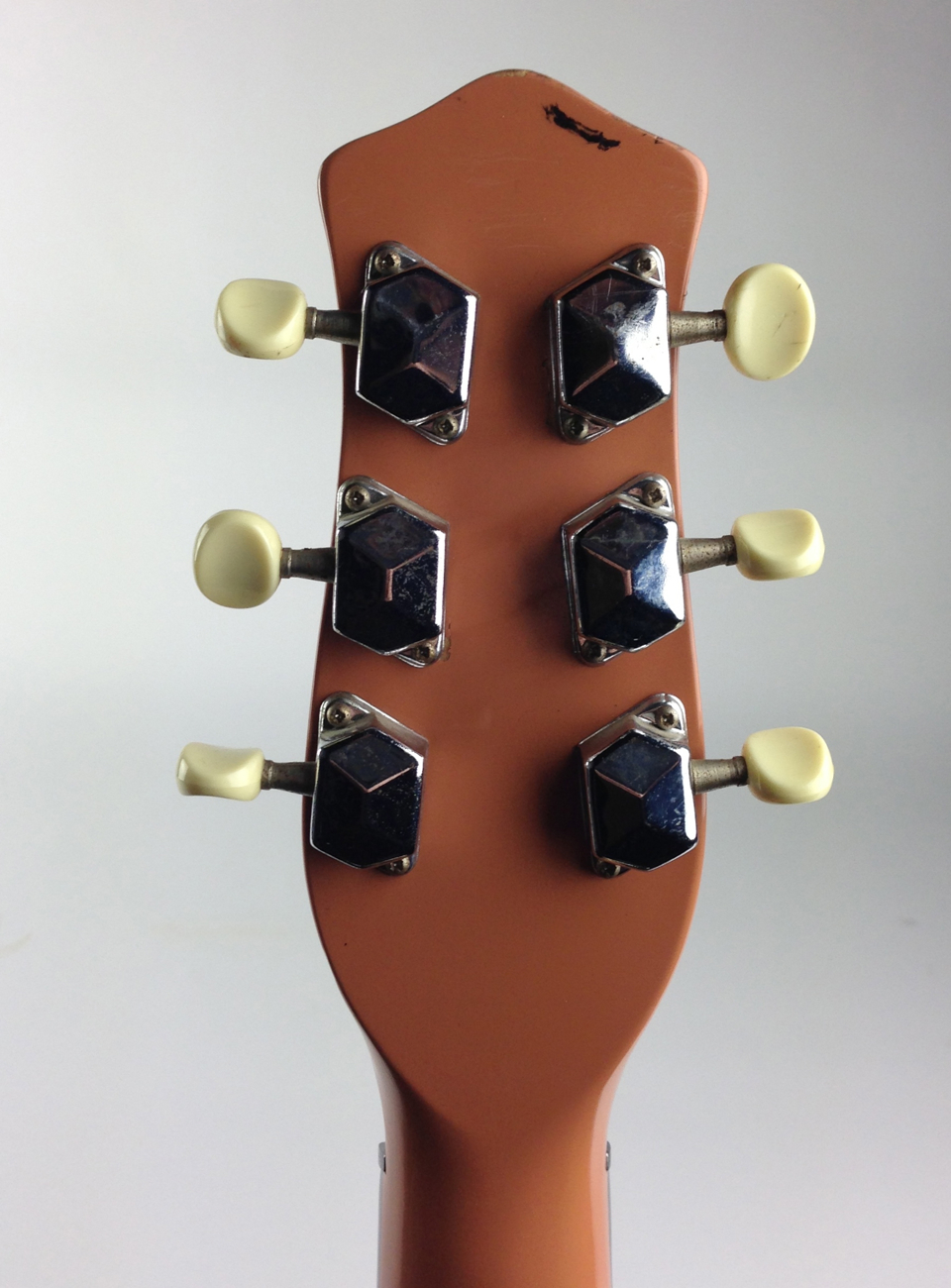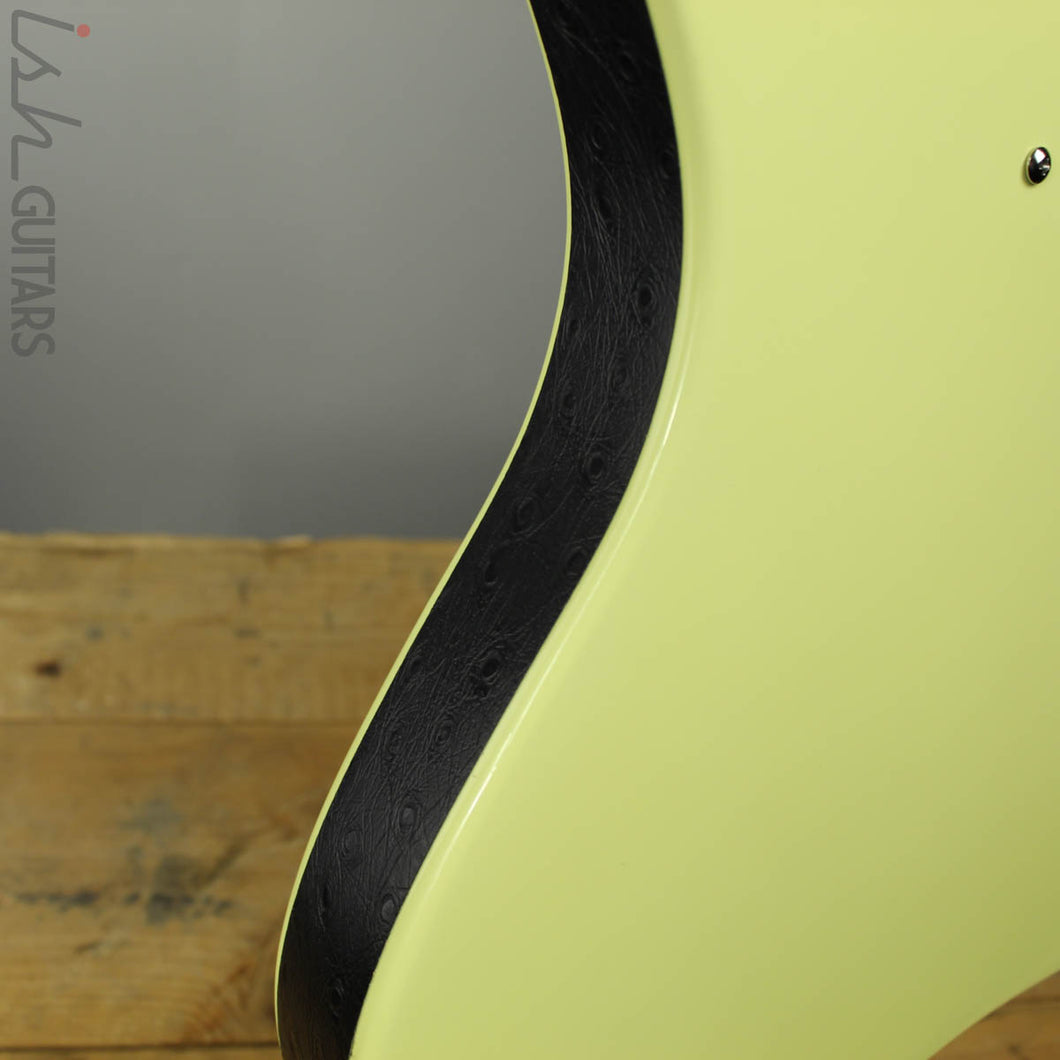Welcome to DanGuitars FAQ archive, built by and for Dano lovers worldwide.
Have a question? Please reach out to us and we'll do our best to help.
The serial number '1065' on the neck butt of a 1965 Stan & Dan model. The '10' is the 10th week, '6' is the unknown digit, '5' is the year (1965). Danelectro DC59 Reissue electric guitar - $300 QR Code Link to This Post. Super reliable all throughout a few tours and a lot of recording. I had it set up about a month ago. From the serial number, I think it was made in 2009. It plays and sounds great! Porch pick up in West Philly!
| COLLAPSE ALLA: 'You must love your new Danelectro guitar.. or we will make it right!' - Danelectro®
For all warranty service inquiries, please visit Danelectro.com or reach out directly to michelle@danelectro.com.
A: Methods of Measurement:
All measurements with guitar in playing position, no exceptions, guitar cannot be laid flat on a table or workbench to make measurements. All strings must be tuned to pitch when measurements are made.
Action: Measured from top of 12th fret to bottom of string with 6' steel rule in 1/64' incrementsFor Bass and Baritone there are measurements for the low and high strings. The inner strings will graduate in height and follow the fingerboard radius.
Truss rod: Capo 1st fret and fret low E string at 15th fret. Measure space between the top of the 7th fret and bottom of string with feeler gauge.
Nut height: Measure space between top of first fret and bottom of each string with feeler gauge.
Pickup height: measure space from the top of the pickup to the bottom of the low and high E strings using the 6' steel rule in 1/64' increments.
GUITAR SPECS
Action: set to 2/32' at the 12th fret for all strings
Truss rod: 0.010'
Nut height: at 1st fret: 0.018'
Pickup Height:
Bridge: 3/64' top of pickup to bottom of string
Neck: 4/64' top of pickup to bottom of string
BARITONE SPECS
Action: set to 5/64' at 6th string (low string) not to exceed 6/64' 4/64' at 1st string (high string) not to exceed 5/64'
Truss rod: 0.010' - 0.012'
Nut height: at 1st fret: 0.020”
Pickup Height:
Bridge: 2/32' top of pickup to bottom of string
Neck: 4/32' top of pickup to bottom of string
BASS SPECS
Action: set to 8/64' at 4th string (low string) at the 12th fret 6/64' at 1st string (high string) at the 12th fret
Truss rod: 0.012' - 0.015'
Nut height: at 1st fret: 0.022'
Pickup Height:
Bridge: 2/32' top of pickup to bottom of string
Neck: 4/32' top of pickup to bottom of string
Danelectro Reissue Serial Numbers
A: The 'seal' pickguard has double sided tape holding it on. Take a metal spatula and slide it under the pickguard. Move the spatula around while you lift and pry off carefully. You can also heat up the pickguard a bit with a blowdryer to help loosen up the adhesive on the tape.
A: Bending or curving of these bridges seems to be common. Unless you are having problems with string buzzing you might as well leave it on. Many players replace the rosewood bridge with the adjustable SB-5800 bridge as it will not bend, makes stringing easier and keeps the guitar in tune better and allows for intonation.
A: No. The SB-5800 bridge will not accomodate the larger gauge of baritone strings. Unfortunately, Danelectro baritone bridges are not currently available.
Danelectro Reissue Serial Numbers Search
A: Here's what makes the 2007 '59 Dano different from the first reissue 59-DC. Unlike the first reissues that were made in Korea, the 2007 '59's were made in China. It is approximately one pound heavier at 6.6 versus 5.5 lbs; has somewhat hotter/louder pickups; different shape headstock; upgraded (Gotoh style) tuners; fully adjustable and intonable bridge; wider/thicker neck; upgraded toggle switch; input jack is now on the side rather than on the front; single volume and tone controls have replaced the concentric controls; matte pickups and hardware as opposed to shiny chrome; matte finish; aged looking side binding tape and seal pickguard for a vintage look.
A: All Danelectro resissue models are currently made in Korea. The 2007-2008 models were made in China. The 1998-2001 reissues, such as the DC-3 were also made in Korea. Some of the 1998 59-DC's and 56-U2's were made in Indonesia. Regardless of where any of these were made, they are for the most part all nice quality with decent factory set-ups using 10 gauge strings across the board on the guitars.
In my opinion, the quality control on these newer Danos is as good as the earlier reissues. They are however, very different guitars in many respects. Let's face it, you can't compare a vintage Dano made in Neptune, New Jersey with any Dano that's been made since!
A: On the vintage Danos the side binding tape was necessary to hide a seam in the body. On the newer models it's strictly decorative and keeps that vintage vibe going. On these newer Danos, inparticular the 59-DC first reissue, the problem with the side binding tape lifting or bubbling is usually caused by tape shrinkage due to changes in temperature and/or humidity. This is of course strictly an aesthetic issue. Nevertheless it's annoying so you'll want to remedy the situation.
Try taking a blow dryer and heating the tape, being careful not to overheat and melt it. While the tape is warming, begin pressing it down while at the same time rubbing it with your fingers. Keep up this pressing/rubbing motion until the tape cools a bit. Sometimes it helps to put a soft cloth between your fingers and the guitar while rubbing. If there was enough glue on the tape originally it may stay down, although this may only prove to be a temporary fix. Tape usually starts popping up again especially if the guitar gets cold.
If the blow dryer procedure doesn't have a lasting effect, try lifting up the tape and applying a very thin layer of super glue to the back of the tape using a toothpick or glue syringe. Do not spread the super glue right to the edge of the tape as it will get on the guitar when you press the tape down to affix it. (Note: Do not use expandable type glues as this may cause bumps under the tape). With the glue spread evenly on the tape, press down on the tape while simutaneously rubbing making sure you don't super glue your fingers to the body! Keep up this pressing/rubbing moting until the glue has bonded. Also, be careful not to allow any of the glue to leak out onto the body. You will never be able to remove dried super glue!
If the above repair does not produce satisfactory results you'll probably want to replace the tape.
A: On the newer Danelectro models (1998-present), the neck must be removed for truss rod adjustment. Turn truss rod adjustment only 1/4 turn over a 24 hour period to avoid damage to the neck.
A: There's no way to confirm an exact manufacturing date on any of the first Danelectro reissues. Curiously, there was no valid serial number system. The sticker that was applied on the back of the neck which appears to be a serial number, meant nothing. The first reissues were however made between 1998-2001. Some prototypes of these models were produced earlier in 1997. The DC-3, like the Mod 6 and the Hodad can not be considered re-issues as they have no predecessors. They were actually new models at the time of manufacturing.
More on serial numbers and dating vintage Danos here
Installation tips: The two flathead screws go under the top of the bridge and NOT through the bridge holes. Bottom (roundhead) screw goes through bridge hole. Screw in the two flathead top screws so that the underside of the bridge is a minimum of 1/16 inch distance away from the body of the guitar. Start bottom side adjustment of bridge so that you can slide a medium thickness pick between the bridge and the body. Fine tune your installation adjustments from here.
Tip for adjusting the bridge: The locking screw sits directly under the string so to stop the saddle shooting forward you need to slacken the string before you unlock it. It also seems to help sustain and resonance if you screw the central fixing screw hard down so the back of the bridge sits on the top of the body.
Note: The neck must be removed for truss rod adjustment. Turn truss rod adjustment only 1/4 turn over a 24 hour period to avoid damage to the neck.
Purchase Adjustable Bridge

Installation tips: The two flathead screws go under the top of the bridge and NOT through the bridge holes. Bottom (roundhead) screw goes through bridge hole. Screw in the two flathead top screws so that the underside of the bridge is a minimum of 1/16 inch distance away from the body of the guitar. Start bottom side adjustment of bridge so that you can slide a medium thickness pick between the bridge and the body. Fine tune your adjustments from here. The neck must be removed to access the truss rod. Turn truss rod adjustment only 1/4 turn over a 24 hour period to avoid damage to the neck.
A: That's a ground wire. The bridge screw needs to be touching it.
A: A couple of good sources for tubes are Mojo Tone or CE Distribution.

Danelectro Reissue Serial Number Lookup
A: On a workbench or table with a a protective mat:
1. Loosen all the strings and detach the ball ends from the bridge.
2. Remove rear circular plate on back of guitar. Pay attention to the order parts are being removed, i.e wingnut, washer, clamp, spring.
3. Unscrew the wing nut and the bridge will drop off.
4. Tighten the tremolo bar. Now you'll be able to get at the nut.
5. Reassemble bridge and re-string. Make sure set screws are lined against the top two holes on the bridge before screwing in bridge again.
6. The spring can be tightened to any tension you prefer for the temolo.
A: The glue used on a guitar is a very important factor as it must be very strong to hold together the mass of wood that is always under stress. I suppose there are a lot of opinions on this but one product that always seems to work well is Titebond Original Wood Glue. Don't use epoxy adhesives on wood as they don't stick well and you'll have a heck of a time removing the rock hard epoxy residue. Titebond Original Wood Glue is the answer for 99% of guitar repair jobs.
Have a correction, repair tip, or any other helpful Danelectro knowledge to share?
Contact us to help build this FAQ resource for Dano lovers worldwide!
Im trying to find out what kind of Danelectro Guitar i have. It was my brothers a long time ago and i want to know the model but the only think it has is the serial number. Where can i go to check it out ?
Have you tried a word search on the inter-net for 'danelectro product dating by serial numbers', 'danelectro serial numbers', etc?
Does the danelectro web-site have a pull-down menu for product dating?
Have you contacted danelectro via 'Contact Us' on their web-site and ask your questions?

There are many options out there and all you have to do is look for them.
Good Luck,
kcbuck
P.S. If you send me the serial number and any other markings that are on the guitar, I'll see what I can find out in the 'Blue Book for Electric Guitars'.

The serial number is 020001773. I have tried the website but i havent found anything about tracking it.
Danelectro Danoblaster Review
Danelectro Ebay
bgp:
Danelectro serial numbers are coded the first 4 digits 0200 = the first 2 digits are the week of the year it was made (01-52). The third digit is a mystery (batch code or designator?). The fourth digit is the last digit of the production year (which means it is duplicated every ten years). So your guitar was made in the second week of January in either 2010, 2000, 1990, etc.. Hope you can pin down the decade.
Danelectro Reissue Serial Numbers List
I would e-mail Danelectro's 'Customer Service' the serial number via 'Contact Us' at their web-site and ask your questions as this is probably the only way they will get them answered..
Best I can do Bud,
kcbuck
Those may interest you:

